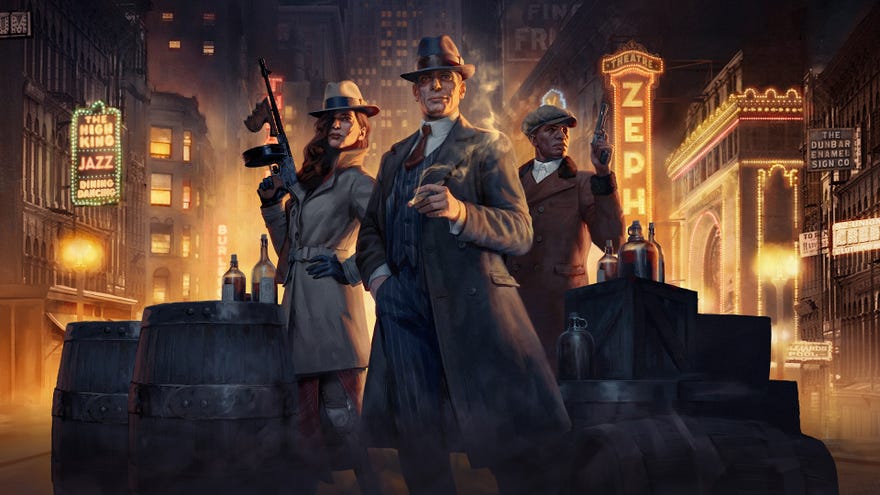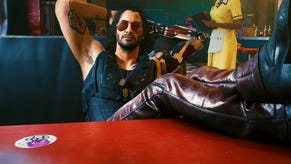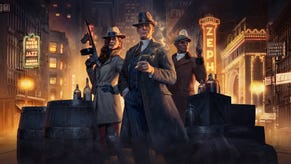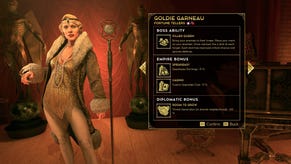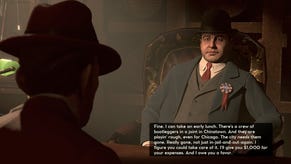How Empire Of Sin's new updates are adding more strategy, more drama, and truth that's stranger than fiction
Romero Games sit down to discuss the state of their empire
I doubt I’d be much cop at counting cards in Vegas, but I have just counted every single item on the patch notes for Precinct, the latest update for Romero Games’ prohibition-era kingpin sim Empire Of Sin. There are over 350 of them, from making gangsters less flirty to giving Al Capone his cigar back on the character select screen. It’s no act of Capone-worthy self-mythologising, then, when game director Brenda Romero describes the patch list to me as “monstrous”.
“Once we put out the immediate flames, we prioritised feedback,” says Romero “Chris [King, senior systems designer]'s hair was fully black when we launched this game. It’s all gone fully grey. I think we were awesome on launch. Incredibly responsive. The team worked their asses off.”
Thankfully, the launch of the Make It Count DLC - and the accompanying free Precinct update - has been a lot smoother.
“When EOS first went out the door, it felt like 4 seconds later somebody discovered a big exploit,” says Romero. “It was just reaction, reaction, reaction. This has been a much different launch. Night and Day.”
You’d think a big launch on a game like Empire Of Sin might give the team some breathing room. But no, says Romero. They’re immediately on every forum. Tweetdeck. Discord. Reddit. Trying to jump on everything as it comes up: “All hands on deck.” Launch, of course, had its issues. In RPS’s review, Tom Senior called it a “game that teeters on the edge of excellence, let down by a few key problems," with bugs and ambitious systems that didn’t always play nice together.
Determined to evolve the game in ways that made sense for both themselves and players, the team set-up what Romero calls their community council. “We cherry picked the most vocal players. And I don’t mean the ones that we’re like, ‘this is great, good job guys!’," she explains. "We mean ‘you have screwed up the following things and I am going to describe them to you really well. Not insultingly, ha! but not leaving any stone unturned.’”
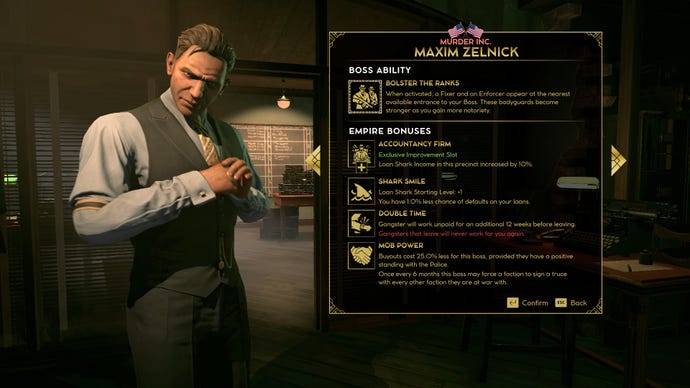
Make It Count and Precinct are focused on several core pillars, aiming to both expand the game and distill its occasionally chaotic mash into the fine hooch it was always meant to be. The addition of territory and supply lines offer a more structured, intermediate layer of empire expansion. “To keep track of the rackets on a neighbourhood level, it was asking a lot,” says King. “By collecting them into smaller groups, it becomes a lot easier for players.”
King describes the new supply lines as adding a “chess-like” layer of decisions. “It’s not just ‘what do I take?', but 'what opportunities will that offer?'” And more meaningful strategy brings with it more dramatic combat encounters. “These depot fights. They’re meaningful. They matter. They’re the ones that flip territory.”
Precinct also offers new win conditions, like the option to buy out your rivals. King says the intention here is to give players more options to engage meaningfully with diplomacy; to play tall rather than wide. “The weakness with diplomacy out of the box was that the objective was to kill everyone. If you were signing agreements where you weren’t going to kill them, you weren’t advancing towards victory. But now you can sign agreements, get the protection treaty, then buy them out.” Diplomacy is now a route to eliminating rivals, rather than just keeping them off your back.
There is, I offer, something infinitely more gangster about coaxing your rivals out of town with a big pile of cash rather than a shotgun, anyway. “It’s an offer they can’t refuse!” says King.
“Players really wanted - because the game is part empire builder - a way they could win by using the might of their empire. More diplomatic strength,” adds Romero.
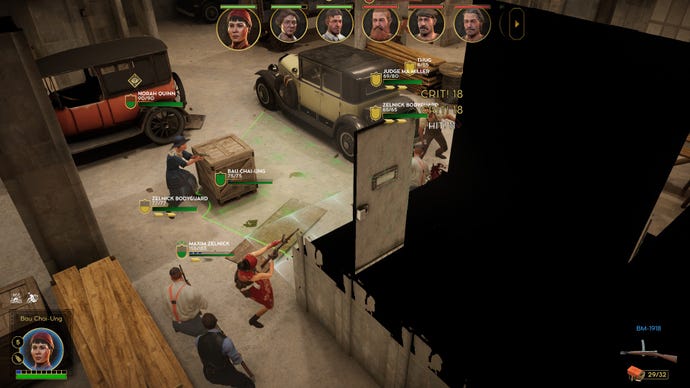
Make it Count - the paid portion of the new content - brings with it loan sharking businesses, the new Fixer class, and new boss Maxim Zelnick. We know how these new additions play into Chicago’s ecosystem, but I was interested to know how much the switch from real-life figure Meyer Lansky to the fictional Maxim Zelnick affected the DLC’s direction.
“There’s excitement about having people like Capone in the game. They’re known names,” says Romero. “They bring their own cache with them. The great benefit of having a character that’s wholly yours, is they become much more ‘the game’ than that fictional character ever could be. Capone is larger than life. I don’t think the same is true of Lansky.”
I’ll admit I felt a twinge of disappointment when I learned that IP issues meant that Lansky wouldn’t be in the DLC. But then I’d also have to admit I’d never have heard of him if it wasn’t for Boardwalk Empire. So what was the process of writing in Zelnick like?
“When you start with a character,” says narrative designer Katie Gardner, “you already have a vague sense of where you want to go with them." The next move, says Gardner, is to look at what mechanics make sense both for the game, and the character. But there’s choice in EOS, too, both mechanically and narratively. “It’s up to the players how they want to express certain characters. If you want to be more ‘burn the bodies’ or ‘burn the books’.”
If you want to feel like a boss, how about riding around Chicago in a chariot pulled by hippos?!
I’d heard Romero previously compare Lansky to the stoic but impossibly badbutt Mike from Breaking Bad. So which of the show’s characters best fits Zelnick?
“Please can it be Saul! Let it be Saul!,” says King.
“He’s too kind!” says Romero. “To me, Zelnick is Gus. He’s very much a gentleman, someone you can trust. Behind the scenes, he’s all business. But a different kind of business.” King expresses how sad he is that it’s not Saul, but says he’ll “get over it”.
The same blend of real history and romanticised caricature runs through EOS’s rogues gallery of playable hoodlums. The team have often mentioned the bizarre rabbit holes they’ve fallen into during research - learning that, in most cases, any fiction they could invent pales next to the fact. Whether a direct figure or archetype, what inspired the new Fixer class?
“So we’ve got one of the fixers. Ma ‘The Pillar’ Miller - she’s the pillar because she’s the pillar of her community,” says Gardner. “She’s loosely based on Ma Ferguson, One of the first female governors of the US. Very corrupt! But very well loved, as well. We wanted to take that personality - this Bill Thompson type figure - there’s something very interesting about that type of likable character. In general, we’re going for people who don’t always like to get their hands dirty. That’s why you’ve got the option to bribe in combat.”

“We were asked, 'what did you have to leave out of the game?' Chris came out with hippo chariots. There is so much strange fiction,” says Romero. King, for his part, points out that if you want to feel like a boss, riding around Chicago in a chariot pulled by hippos would do it.
“We combed through a lot of sources,” says Gardner. “Tried to get to the source. For launch and for Make It Count we wanted to use history as much as possible. When it comes to balancing, we err on the side of using the historical content, even if it comes across as a bit off the wall.” Romero explains that they do a weekly review with the team, and multiple occasions in those meetings where the writing team have called out something as ridiculous - but then Gardener has been able to say it really happened.
This fascination with the era’s history runs deep for the team, particularly for Romero herself. She tells me how she grew up near a bar called The Place that she learnt never closed during prohibition. Her mother dodged her questions on why. “She didn’t want to explain to me that people turned a blind eye. So I became fascinated with criminal empires.” Romero lists some pop-culture that has elements of this: the movie Casino; The Sopranos; Ozark; and even real life criminal empires. She has, she says, "researched the Sinaloa Cartel into the ground".
“I never lose that fascination because it requires such an incredible system," she explains. "Just as a game designer, looking into it, it’s a complicated system, it has a lot of moving parts. Some parts of it have to be good, some parts of it have to be bad. To give an example: the cartel thing: let’s build schools, hospitals, roads in a town. That gets the townspeople on their side. But at the same time, they’re involved in drugs and all kinds of violence.”
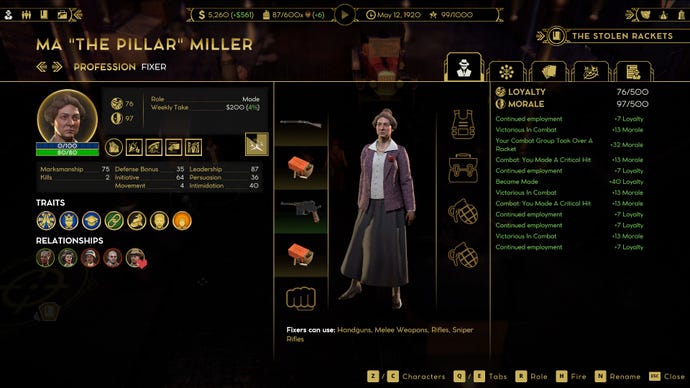
And Make it Count allowed the team to make these systems playable. “The diplomatic conditions Chris talked about, the ‘chai town mogul’ path to victory, that just shows the broader aspect of what it takes to become a criminal kingpin." I kind of love this analogy of running a criminal empire through a systems designer’s eye, so I have to ask, what prohibition-era gangster do the team reckon would make the best game designer?
“Bugsy Siegel,” says King. “He was the one who convinced the mob to go into Vegas. He launched Vegas as a gambling centre, the one who realised 'we can make just as much money running legit casinos as we can from bootlegging!'” Gardner, on the other hand, favours someone like Daniel McKee Jackson: “Ones that have a good grasp of the machinations of the underworld, trying to seem like you have a completely normal front. That’s a lot of organisation on multiple different hierarchies.”
For the sake of avoiding things getting too litigious, I restrain myself from asking who in the games industry the team feels would make the best mafia kingpin. Instead, I’d like to know what the future of Romero Games’ Chicago will look like. “Because the game is live and out there, it’s not a question of us just sitting around and saying, ‘this is what we’d love to do’,” explains Romero. “We’re fortunate we have a very engaged and vocal community. So we know what they’re really hoping for.”
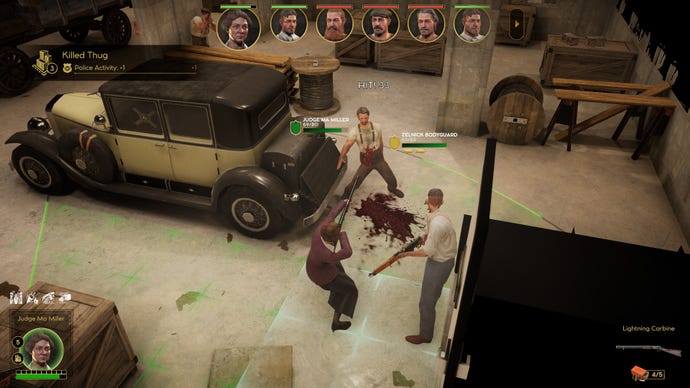
“The point of EOS is that you’re the boss of a criminal empire,” says King “With Make It Count, we tried to help you feel more like a boss, and find new and interesting crimes for you to commit. That’s going to be the future of EOS. What new crimes can we get you committing, and can we make you feel more like a boss.”
The future of EOS, it turns out, is even more fluid than that. Even with the team granting community requests quicker than a Sicillian on the day of his daughter’s wedding, they can’t cover everything. But the Precinct update also brings along mod support, complete with in-house made modding tutorials available in the Steam workshop. For the team themselves, meanwhile, it sounds like Precinct marks a turning point in development. They’ve put out the fires, rebuilt the rackets, and now it's time to splash that insurance money on some fancy outfits.
“At this point, we’re not looking at [development] like, 'the players are doing what? They can finish the game in 20 minutes!',” says Romero. “We’re past that point. We’re doing the fun work now of what else can we do with this core game experience? And that’s a great position to be in.”
